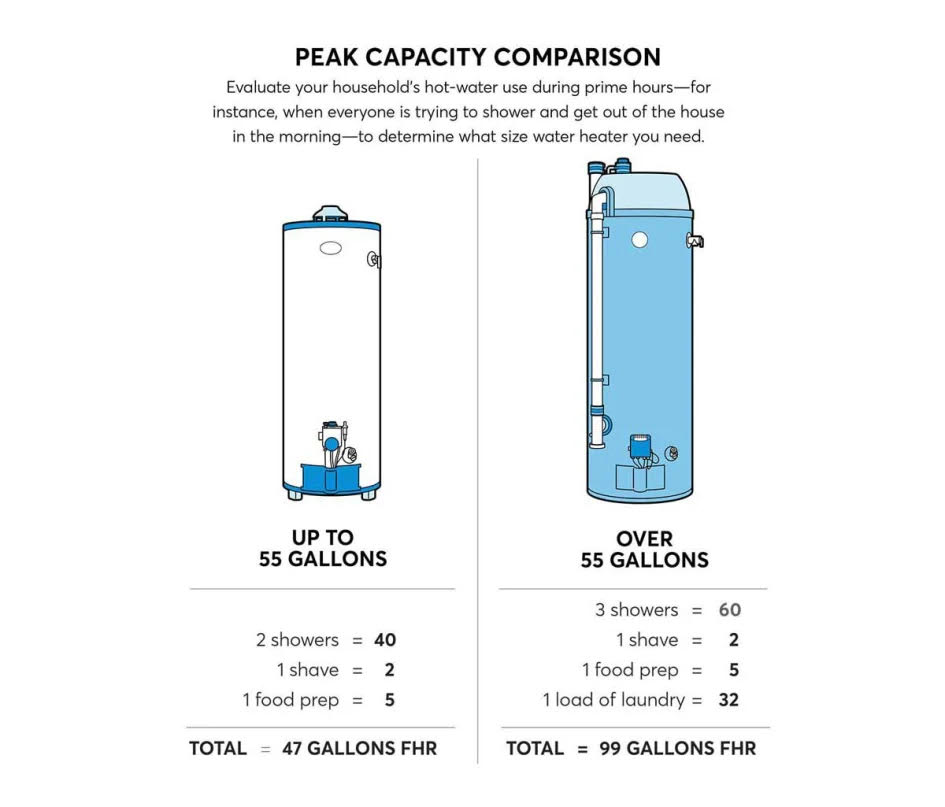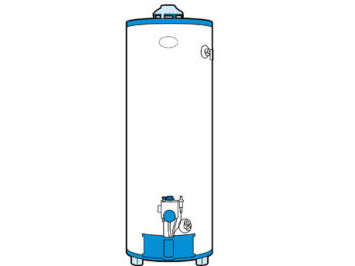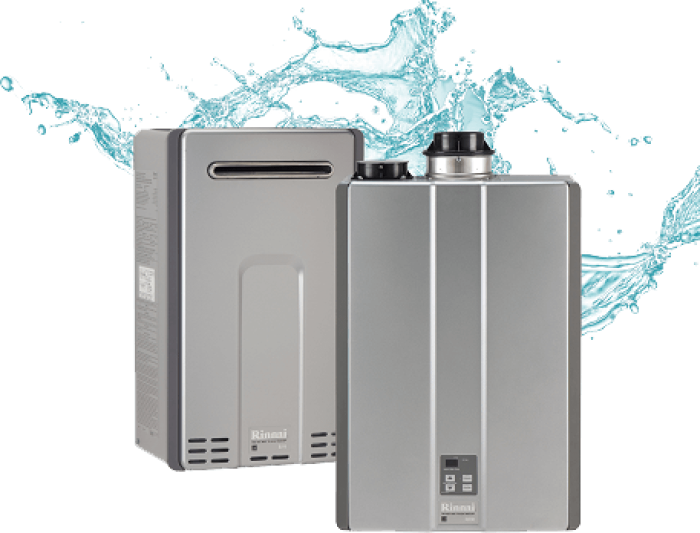If your water heater is nearing the end of its useful life and you’re thinking of replacing it before disaster strikes, you’ll be happy to know that you have better choices, thanks to government regulations that require water heaters to be more energy-efficient. New storage tank water heaters are better insulated and operate more efficiently. Tankless (on-demand) water heaters are even more efficient than storage tanks, as there are no standby loses.
Typically, homeowners replace their old water heater with one of the same types that runs on the same fuel—natural gas or electricity. Switching from a tank water heater to a tankless unit can be expensive because it requires you to retrofit your plumbing and possibly your electrical system. But if you’re building a new home or adding to an existing one, installing a tankless water heater may make economic sense.
 Tank water heaters typically hold 40, 50, or 60 gallons or more. The size you require depends on the number of people living in your home and your peak water usage. A family of four, for instance, might take several showers, run the dishwasher, and wash a load or two of laundry in an average day, totaling 100 gallons of hot water or more. But that doesn’t mean that household needs a 100-gallon storage tank.
Tank water heaters typically hold 40, 50, or 60 gallons or more. The size you require depends on the number of people living in your home and your peak water usage. A family of four, for instance, might take several showers, run the dishwasher, and wash a load or two of laundry in an average day, totaling 100 gallons of hot water or more. But that doesn’t mean that household needs a 100-gallon storage tank.
Residential Water Heater Sizing Guide
| Family Size | Demand | Gallon Capacity |
|---|---|---|
| 1-2 people | High Regular/Low | 40 to 50 gallons 30 |
| 2-3 people | High Regular/Low | 40 to 50 gallons 40 |
| 3-4 people | High Regular/Low | 50 to 75 gallons 40 |
| 5+ people | High Regular/Low | 75 gallons 50 gallons |
For storage tank water heaters, it’s important to consider the first-hour rating, which is the number of gallons a water heater can deliver in an hour starting with a full tank. You’ll find the FHR on the Energy Guide label.
Tankless water heaters, of course, don’t hold much water, so the number to look for is the gallons-per-minute rating (GPM). That’s the number that tells you how much hot water the heater can deliver over a set period of time. The higher the GPM, the more hot water the unit can deliver. A typical shower, for example, uses up to 2.5 GPM. Newer washers use from 7 gallons (front-loader) to 19 gallons (agitator top-loader) per wash, but older models can use up to 32 gallons per load, as indicated below. Calculate your needs accordingly.
Depending on how much hot water you use and how you’re heating the water (gas or electric), there are several choices.
 Storage Tank Water Heater
Storage Tank Water HeaterStorage tanks are the most common type of water heater. As the name suggests, these consist of an insulated tank in which water is heated and stored until needed, then emerges from a pipe on top of the water heater.
Natural-gas water heaters typically use less energy and cost less to run (by about half) than electric water heaters. Check your utility bill to calculate the cost.
Ready to experience all the advantages only enComfort can provide?
Contact us today!

